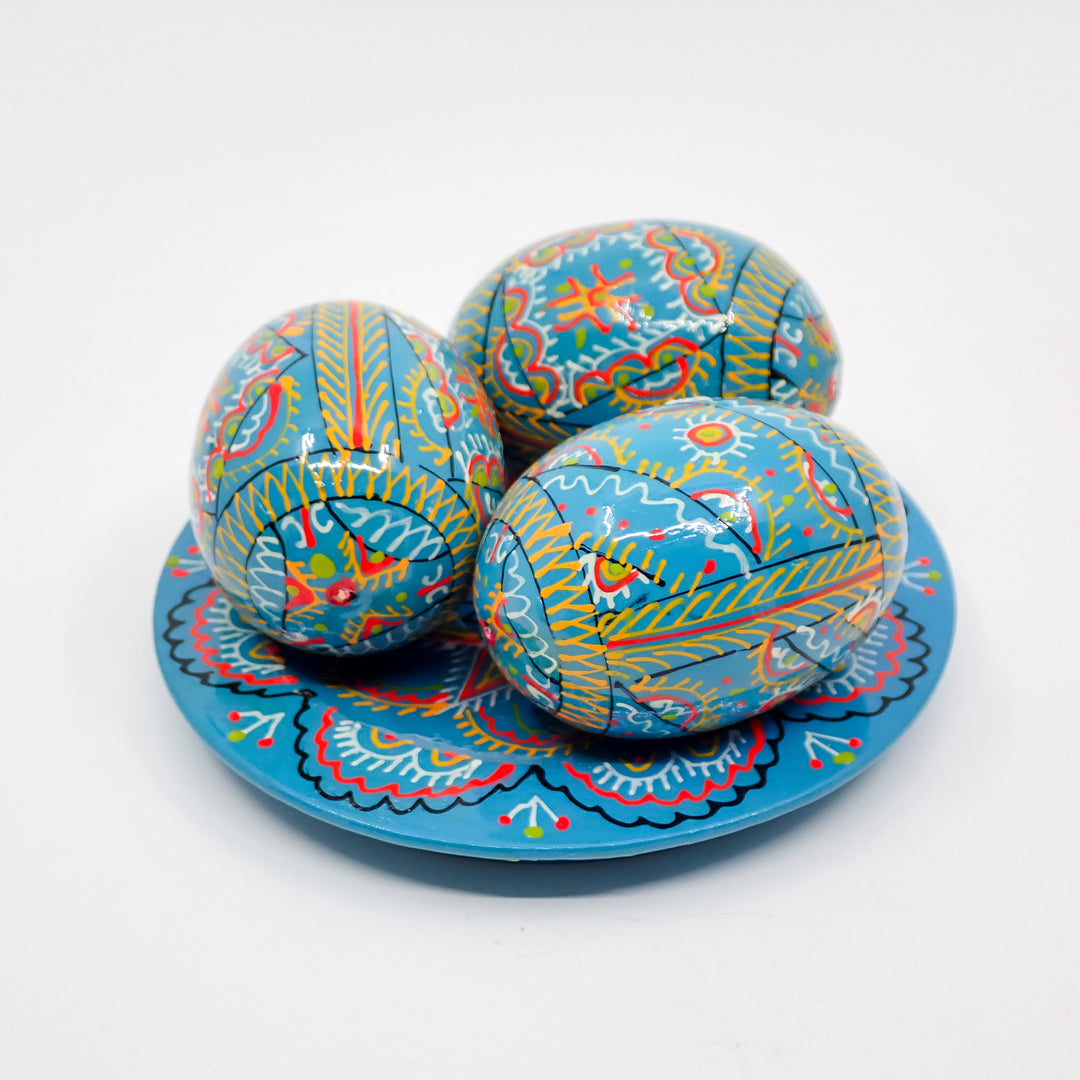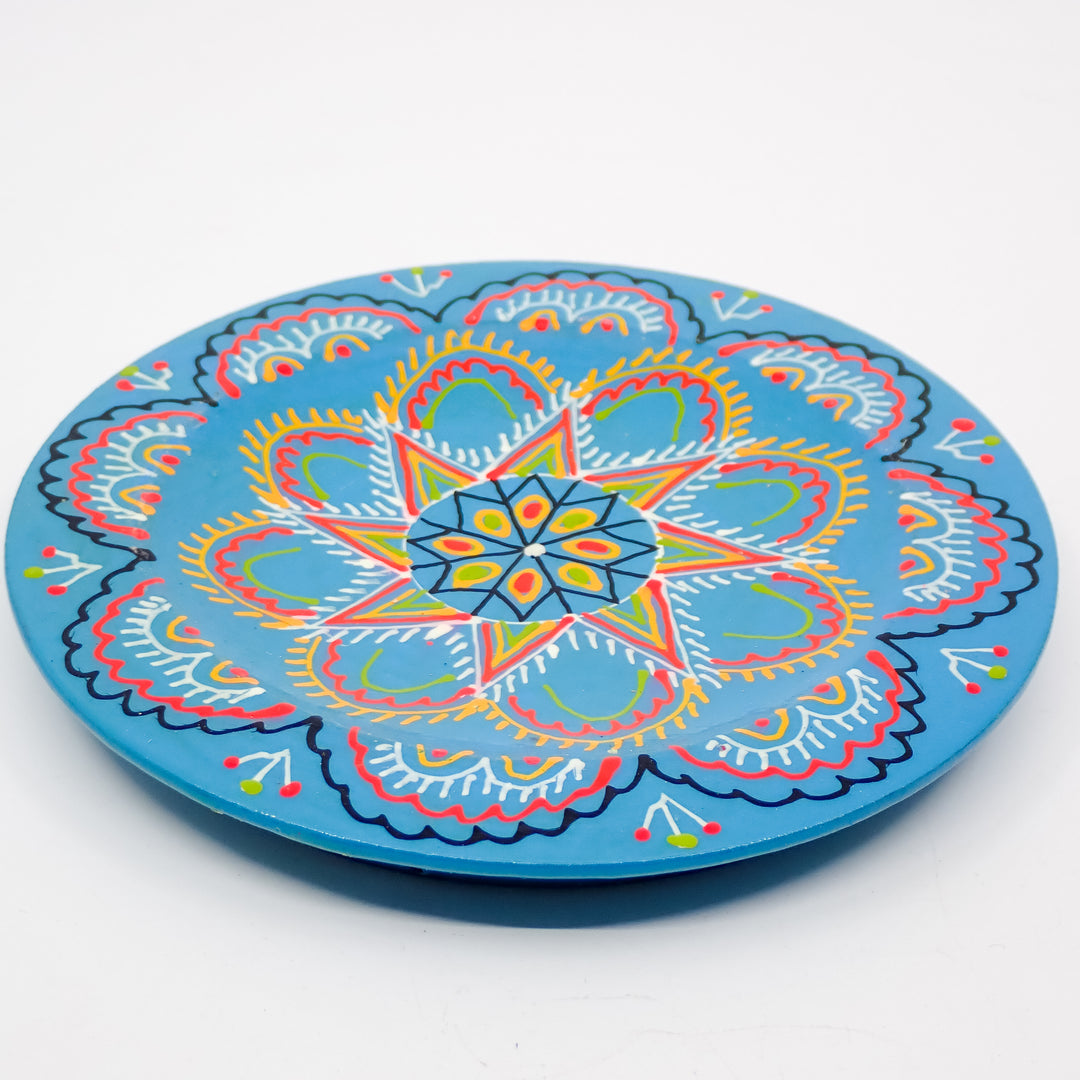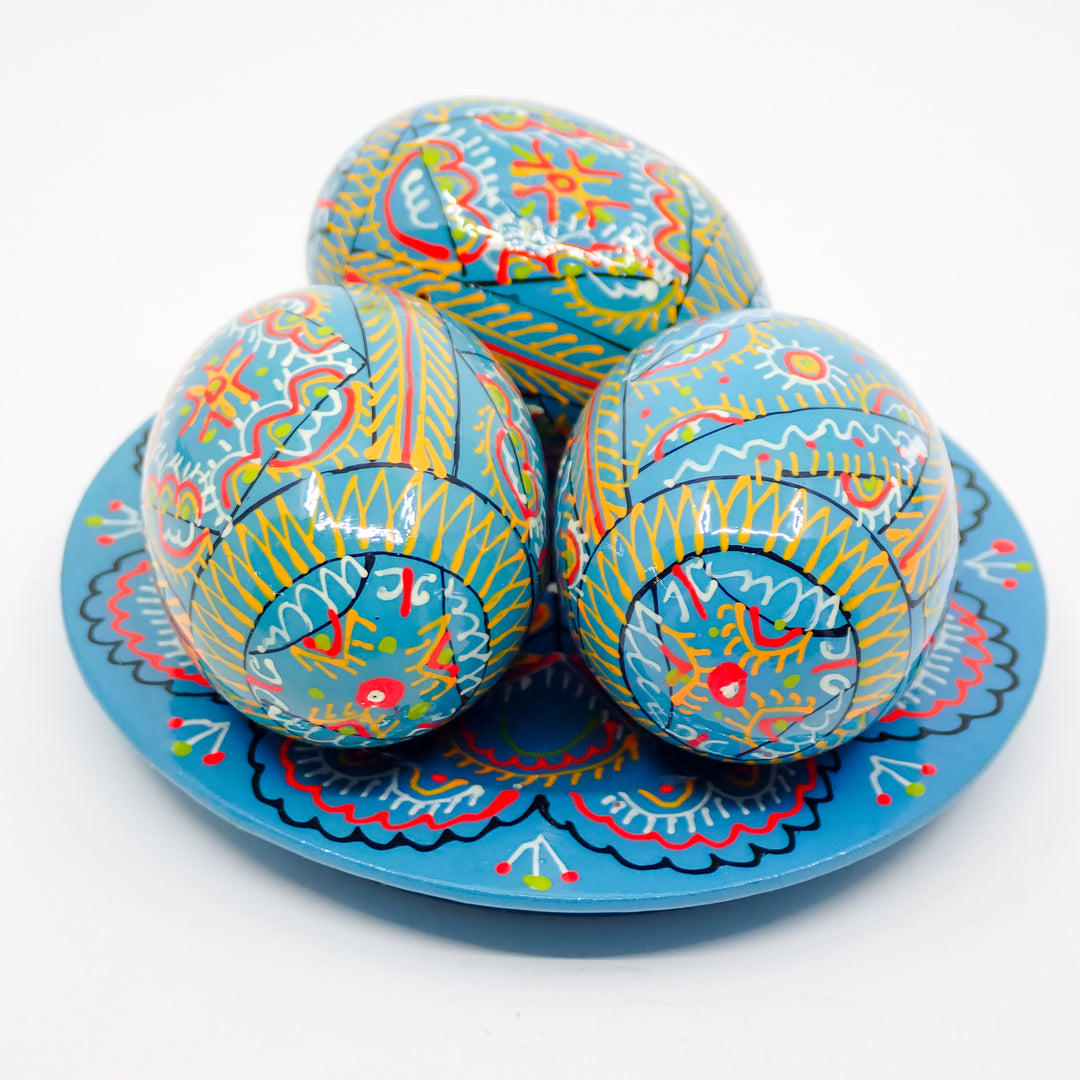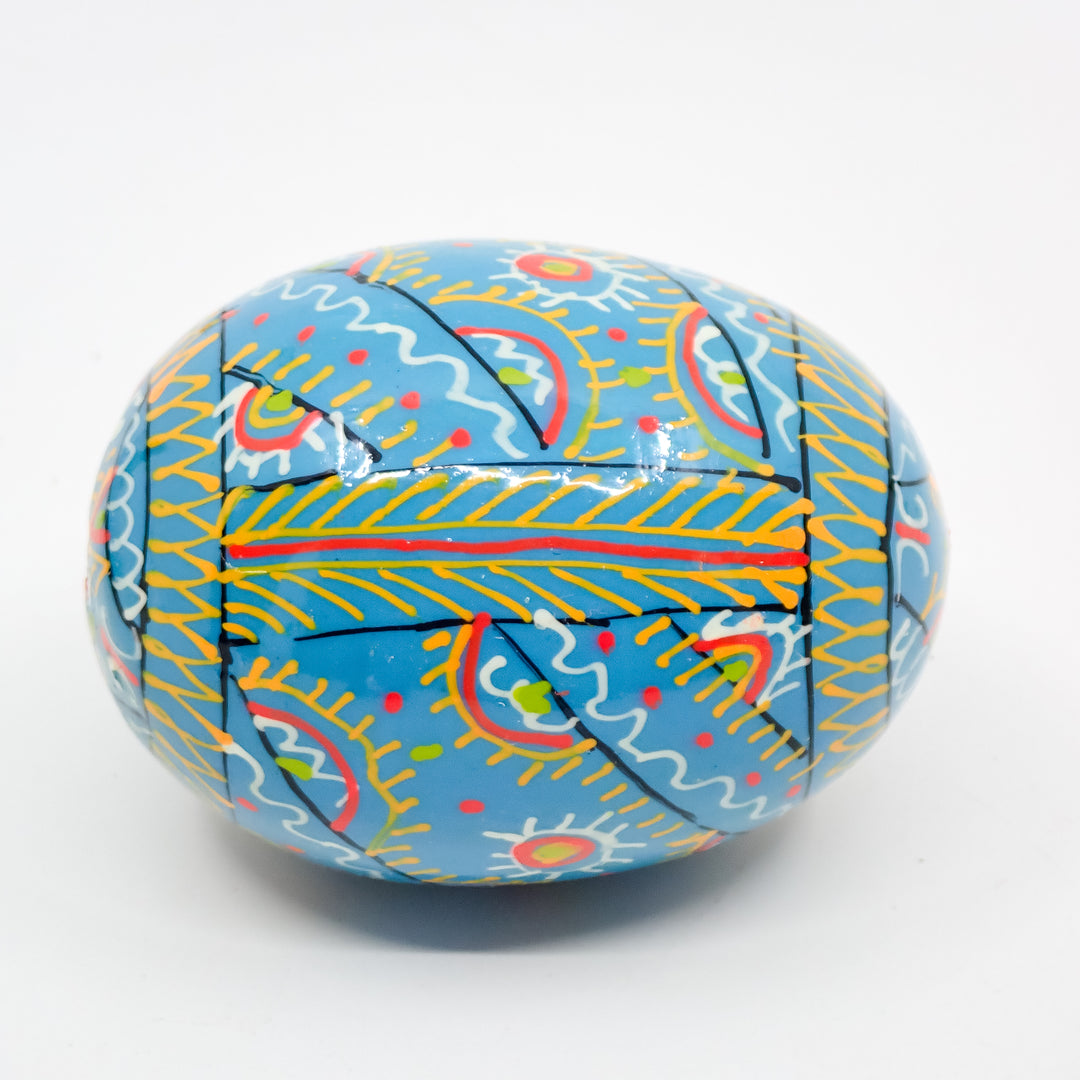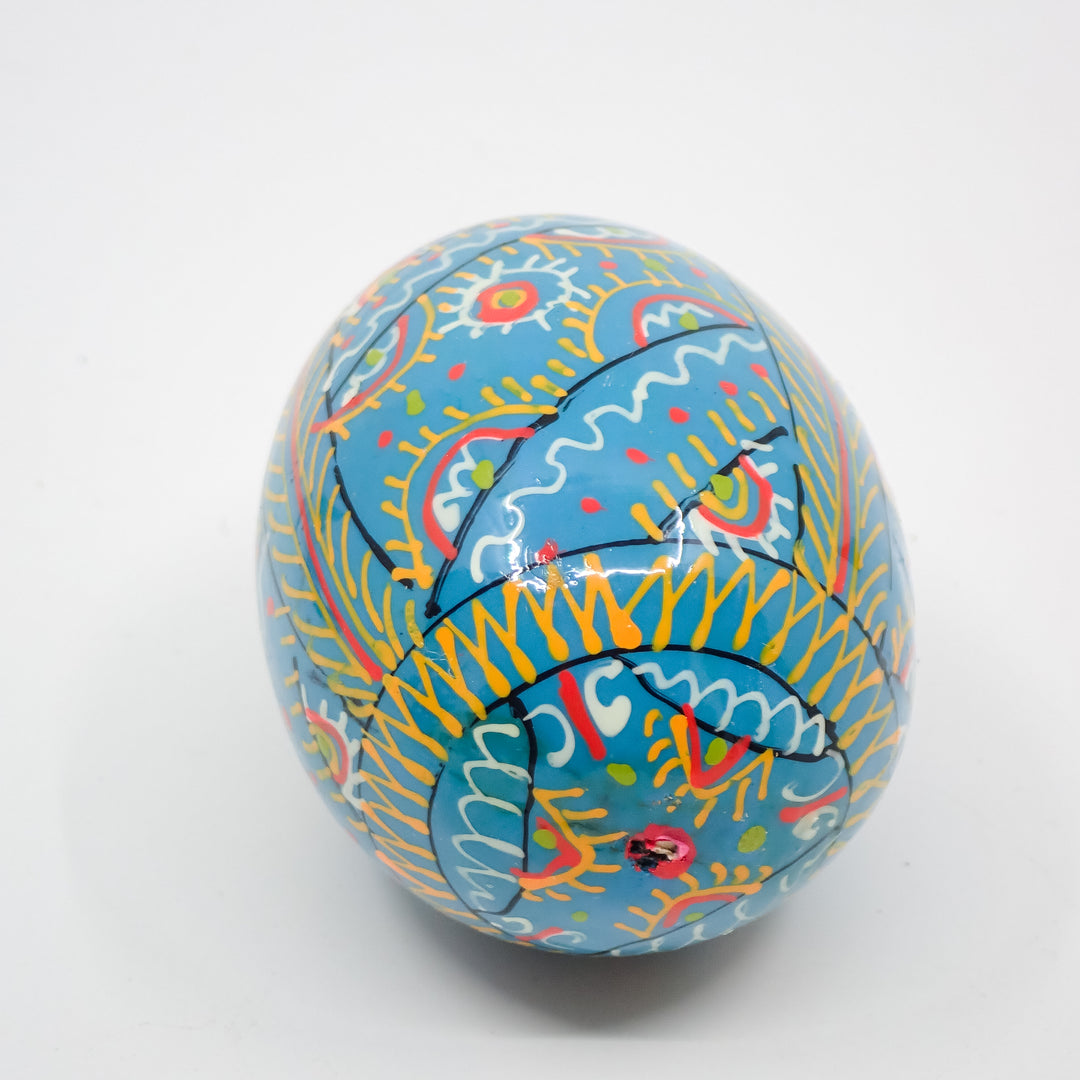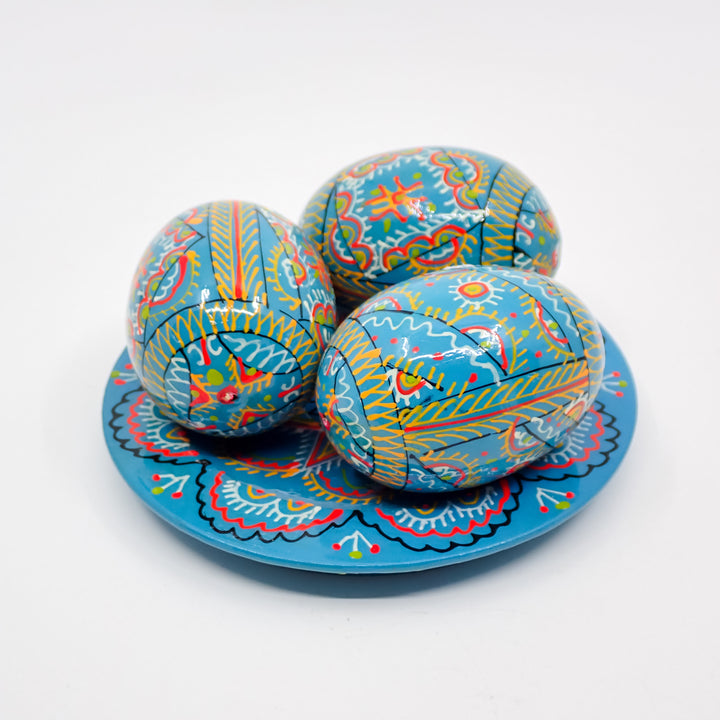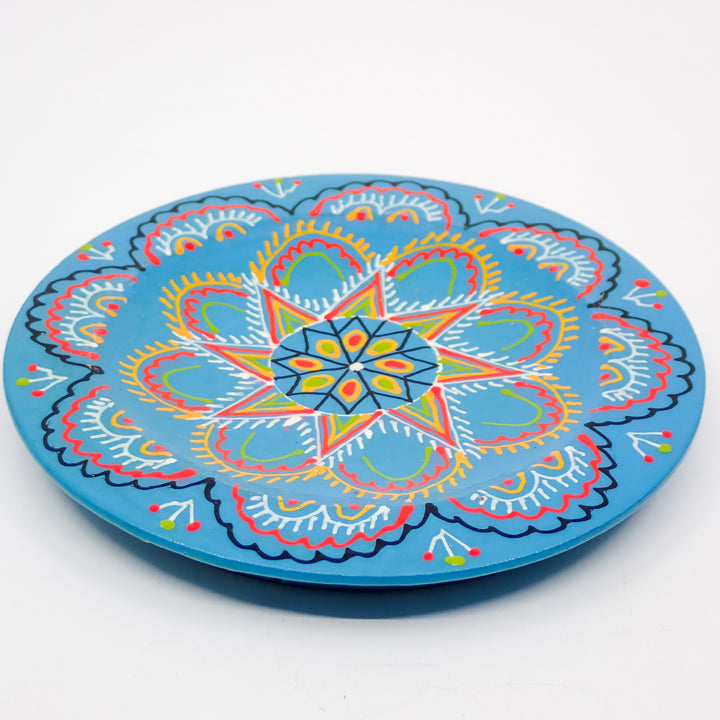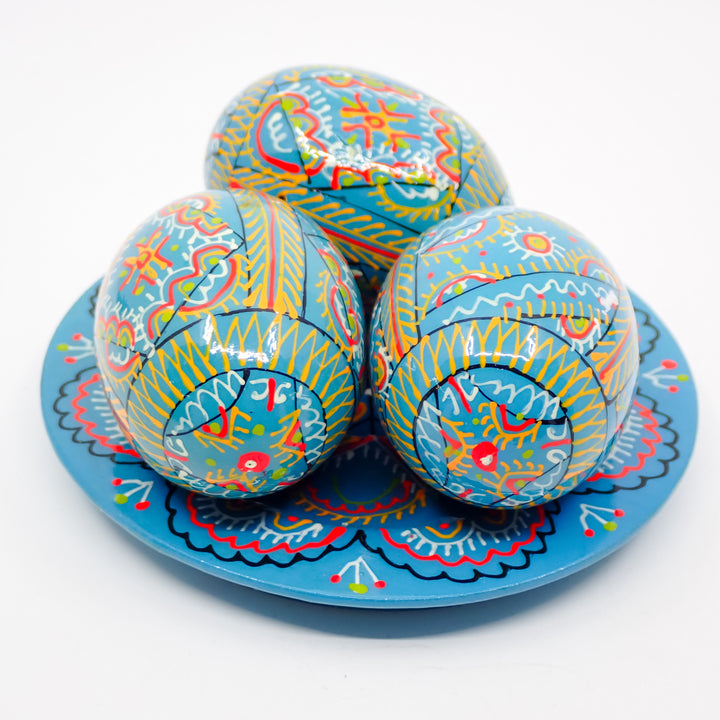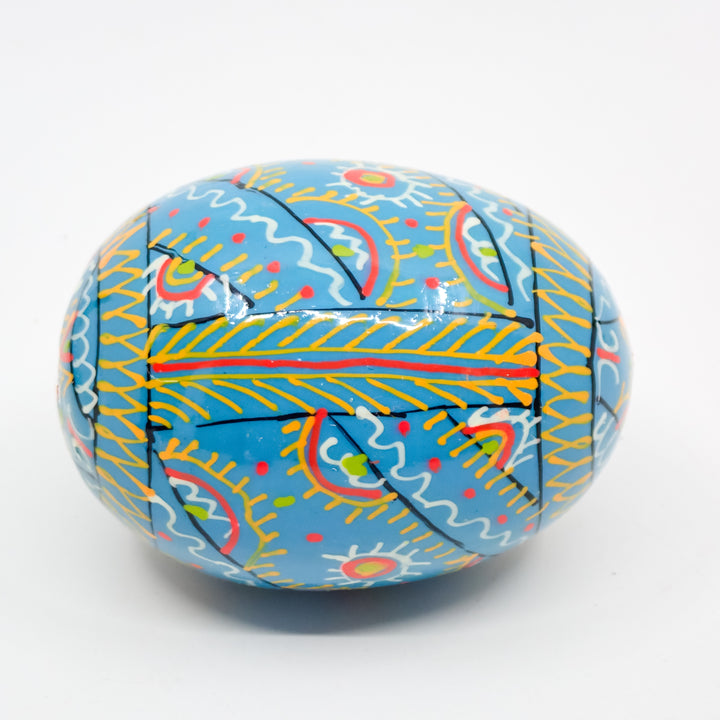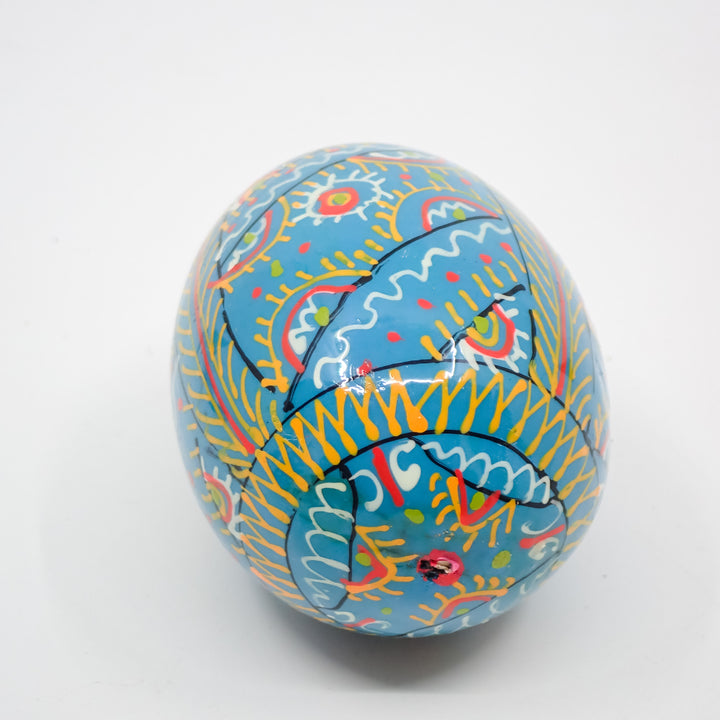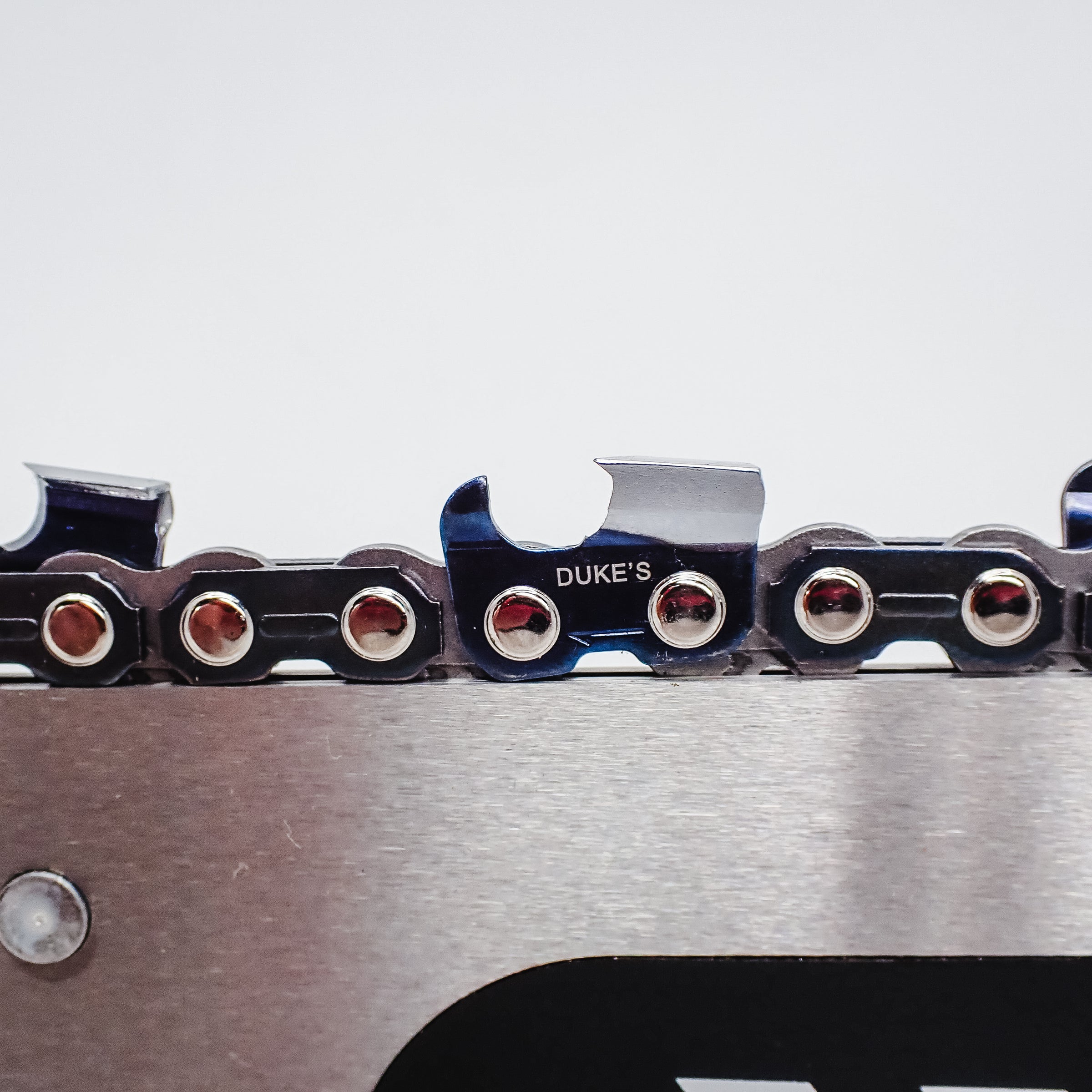UKRAINIAN WOODEN PYSANKY HAND DECORATED EASTER EGGS ON A PLATE TEAL
- In stock, ready to ship
- Inventory on the way
- Fast Shipping From Pennsylvania
- Certified Brand Name : BRAND NAME IN TITLE
BEAUTIFUL COLORED EASTER EGGS ON A PLATE, HANDMADE IN LVIV, UKRAINE.
Beautiful colors are applied to the egg using melted wax and applied with a pen. Since they are handmade each individual egg is different, with different styles. With this listing you will receive one pysanky Easter egg, but the style will vary for each order shipped. You will receive ONE egg similar to what you see in the numerous photographs.
The Ukrainian name for a wax-resist type egg, pysanka, comes from the verb pysaty (писати), meaning "to write", as the designs are written onto the egg with beeswax, not painted on.
No actual pysanky have been found from Ukraine's prehistoric periods, as eggshells do not preserve well. Cultic ceramic eggs have been discovered in excavations near the village of Luka Vrublivets'ka, during excavations of a Trypillian site (5th to 3rd millennium BC). These eggs were ornamented and in the form of торохкальці (torokhkal'tsi; rattles containing a small stone with which to scare evil spirits away).[13]
Similarly, no actual pysanky from the Kyivan Rus' period exist, but stone, clay and bone versions exist and have been excavated in many sites throughout Ukraine. Most common are ceramic eggs decorated with a horsetail plant (сосонка sosonka) pattern in yellow and bright green against a dark background. More than 70 such eggs have been excavated throughout Ukraine, many of them from graves of children and adults. They are thought to be representations of real decorated eggs.
These ceramic eggs were common in Kyivan Rus' and had a characteristic style. They were slightly smaller than life size (2.5 by 4 cm, or 1 by 1.6 inches) and were created from reddish pink clays by the spiral method. The majolica glazed eggs had a brown, green or yellow background and showed interwoven yellow and green stripes. The eggs were made in large cities like Kyiv and Chernihiv, which had workshops that produced clay tile and bricks; these tiles (and pysanky) were not only used locally but were exported to Poland and to several Scandinavian and Baltic countries.[14]
The oldest "real" pysanka was excavated in Lviv in 2013[15] and was found in a rainwater collection system that dates to the 15th or 16th century. The pysanka was written on a goose egg, which was discovered largely intact, and the design is that of a wave pattern. The second oldest known pysanka was excavated in Baturyn in 2008 and dates to the end of the 17th century. Baturyn was Hetman Ivan Mazepa's capital, and it was razed in 1708 by the armies of Peter I. A complete (but crushed) pysanka was discovered, a chicken egg shell with geometric designs against a blue-gray background.[16]
The practice of pysankarstvo was widespread throughout Ukrainian ethnographic lands. They were written in every corner of Ukraine, with traditional folk designs being documented by ethnographers well into the late 19th century in every region of Ukraine. This included those Ukrainians resettled within the Russian empire, and into nearby Slavic countries.
In the mid-19th century, as the modern era unfolded, a shift began in the function of the pysanka, from being a ritual object to that of being a decorative one. Pysankarky (women who wrote pysanky) in the Carpathian mountains (mostly Hutsuls, but Bukovinian Ukrainians and Pokuttians as well) began mass producing pysanky and taking them to nearby towns to sell at Easter. This practice proved profitable, and Ukrainian pysanky began to appear in markets throughout western Ukraine and the rest of the Austro-Hungarian Empire, including major cities like Vienna and Budapest.
In modern times, the art of pysankarstvo was carried abroad by Ukrainian emigrants to North and South America, western Europe, and Australia, where the custom took hold; the practice was concurrently suppressed[failed verification] in Ukraine by the Soviet regime, where it was considered a religious practice nearly forgotten.[17] Museum collections were destroyed both by war and by Soviet cadres.[17] Small areas of folk pysankarstvo survived in Ukraine, in the Cherkasy region and in Northern Bukovina, Hutsulshchyna and Pokuttia, as well as among the Lemkos in neighboring Poland and Slovakia.
Since Ukrainian Independence in 1991, there has been a rebirth of this folk art in its homeland, including a renewal of interest in the preservation of traditional designs and research into its symbolism and history. The Russian invasion of Ukraine in 2022 sparked increased interest in pysankarstvo, both in Ukraine, where patriotic motifs have become more common, and abroad, where interest in Ukrainian culture has dramatically increased.


